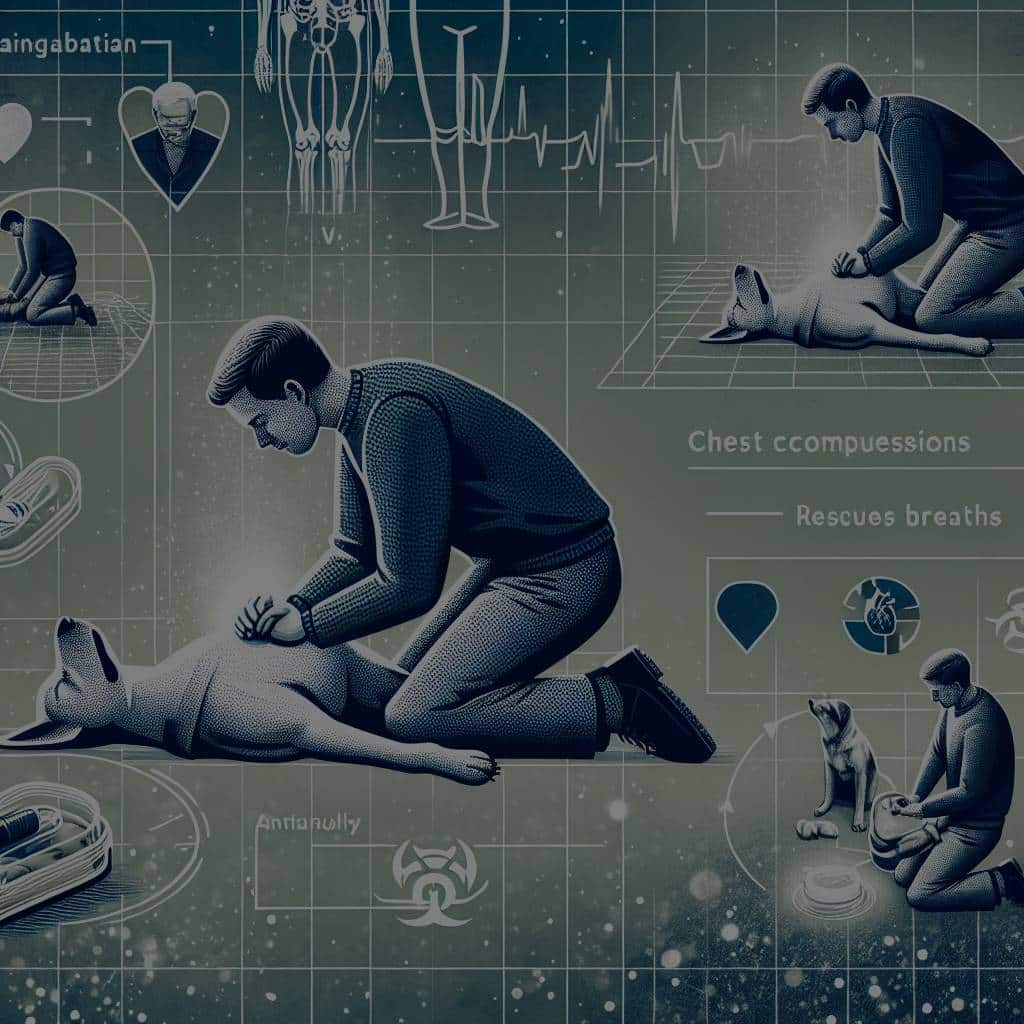How to Perform CPR on Your Pet in Case of an Emergency?

As pet owners, your love and dedication towards your furry companions are evident. You go to great lengths to ensure your pets are well-fed, well-groomed, and receive regular veterinary check-ups. However, emergencies can occur at any time, and you must be prepared to act as your pets’ first aid responders until professional help arrives. Knowing how to perform Cardiopulmonary Resuscitation (CPR) on your pet can be a lifesaving skill. It can restart a pet’s heart and restore its breathing, potentially saving its life.
Identifying the Need for CPR
Before jumping into the specifics of performing CPR on your pet, it’s essential to know when this emergency tactic is necessary.
Also read : How to Train a Bird to Safely Free-Fly Outdoors?
If your pet is unconscious and lacks a heartbeat or regular breathing, CPR may be needed. CPR combines chest compressions and rescue breaths to maintain the flow of oxygen-rich blood to your pet’s brain and other vital organs. It can buy precious time until your pet receives veterinary care.
Specific signs that your pet needs CPR include sudden collapse, unresponsiveness, abnormal breathing, and absence of a pulse. It’s crucial not to rush into performing CPR unless it’s necessary, as it can potentially do more harm than good in certain situations.
Also read : How to Create a Pet-Friendly Workspace When Working Remotely?
Preparing to Perform CPR on Your Pet
Before you start performing CPR on your pet, there are a few essential steps you need to follow. First, ensure your pet is in a safe place, away from hazards such as traffic or electrical cords. Next, try to rouse your pet gently – if it’s merely unconscious, it may wake up.
The next step is to check for signs of breathing and a pulse. Place your hand or ear on your pet’s chest to feel for a heartbeat. Watch for the rising and falling of your pet’s chest, which indicates breathing. If there’s no sign of either, prepare to initiate CPR.
Performing Chest Compressions
Once you’ve established the need for CPR, begin with chest compressions. For dogs, the best place to perform compressions depends on their size and shape. For most dogs, laying them on their side and compressing the widest part of their chest is effective.
For cats and small dogs, however, it might be more effective to place your fingers on one side of the chest and your thumb on the other, squeezing both together. In all cases, compressions should happen rapidly, at a rate of 100-120 per minute.
Each compression should push the chest down by one-third to one-half of its width. This depth ensures that blood is effectively pumped from the heart to vital organs.
Administering Rescue Breaths
After 30 chest compressions, give your pet two rescue breaths. Close your pet’s mouth and extend its neck to open the airway. Then, place your mouth over its nose and blow gently. Watch for the chest to rise, indicating that the breath has gone in. If it does not, adjust your pet’s airway and try again.
After the two breaths, return to chest compressions. Continue alternating between compressions and breaths until your pet begins breathing on its own or until you reach a vet.
Seeking Veterinary Care
Even if your pet appears to recover through CPR, it’s crucial to seek veterinary care immediately. The underlying cause of the cardiac arrest may still be present, and your pet will likely require further treatment.
CPR is a potent emergency tool, but it’s not a cure. It’s a temporary measure to keep your pet alive until it can receive professional veterinary care.
It’s also valuable to learn these skills from a trained professional. Consider enrolling in a pet CPR course or asking your vet for a demonstration. After all, preparedness is the first step in ensuring your pet’s well-being and longevity.
The Importance of Practice and Preparedness
The ability to perform CPR on your pet is an invaluable skill that could potentially save their life. However, it’s not enough to simply know the steps. Practice and preparedness are crucial for effectively executing pet CPR in the heat of the moment.
Firstly, consider seeking professional guidance. Many organizations offer pet CPR courses, providing instruction and hands-on practice. This training can help you become more comfortable with the procedures and understand the nuances of performing CPR on different breeds or sizes of dogs or cats.
Secondly, repetition is key. Just like humans practicing CPR on mannequins, practicing the motions of pet CPR can help solidify your understanding and confidence. Use a stuffed animal or a pet CPR dummy to simulate the experience. Remember, in the case of an actual emergency, you’ll be under stress, and the more ingrained the procedures are in your mind, the better.
Thirdly, keep the necessary supplies handy. A good quality pet first-aid kit should include a card with CPR guidelines, a muzzle (an anxious or scared pet may bite), and your vet’s contact information.
Last but not least, always remember to prioritize getting your pet to a veterinary professional as quickly as possible. No matter how effectively you perform CPR, only a vet can address the underlying cause of your pet’s cardiac arrest.
Conclusion: Every Pet Owner’s Responsibility
No pet owner ever wants to imagine their beloved pet in a life-threatening situation. However, emergencies can happen unexpectedly, making it essential that you’re prepared to act swiftly and effectively. Knowing how to perform CPR on your pet is a vital part of this preparedness.
CPR can be a lifesaving measure for your pet during a cardiac arrest, buying crucial time until veterinary help is available. The process involves identifying the need for CPR, preparing for the procedure, performing chest compressions and rescue breaths, and seeking immediate veterinary care afterward.
To enhance your readiness, consider enrolling in a pet CPR course, regularly practicing the procedures, and always keeping a well-stocked pet first-aid kit within reach. As a pet owner, it’s your responsibility to ensure the safety and well-being of your pet. By preparing yourself to perform CPR, you’re taking a significant step in fulfilling this duty.
Being a pet owner is much more than cuddles and playtime. It involves taking on the role of protector and caregiver. By learning to perform CPR on your pet, you’re ensuring that you’re equipped to fulfill this role in every possible scenario. You can’t control everything, but you can control how prepared you are. And when it comes to the life of your pet, every minute counts.
